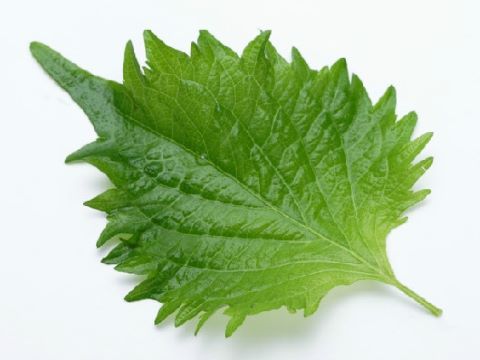
Actually, Shiso (紫蘇) and Ooba (大葉) are the same things.
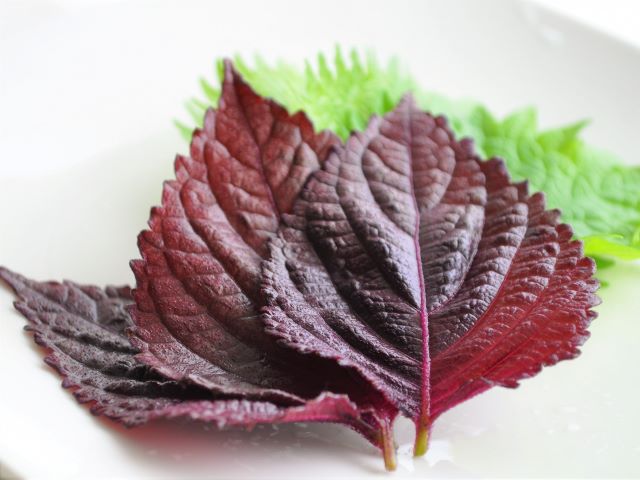
Shiso (perilla leaf) has green perilla (青紫蘇) with green leaves and red perilla (赤紫蘇) with reddish-purple leaves. Shiso is originally reddish purple in color, and green perilla is a variant of red perilla. The red color of red perilla is due to the pigment shisonin, a type of anthocyanin.
What is Shiso?
Shiso originates from southern China to Myanmar. The shiso is an aromatic Japanese herb and has been used as a condiment in tempura and other Japanese dishes for centuries. Shortly sprouted seeds are called Mejiso (芽紫蘇). The young shoots of green perilla are Aome (青芽), and the young shoots of red perilla are Murame (紫芽).
And Hanajiso (花紫蘇), where about 30% of the shiso flowers are about to bloom. Hojiso (穂紫蘇) is harvested while the fruit is immature. These are also used as garnishes and condiments for sashimi and other dishes.
Why is Shiso called Ooba?
There are two theories. One is to distinguish it from Mejisho, which was used as Tsuma for Sashimi. The young shoots of shiso are Mejisho and the leaves of shiso are Ooba. The other is Ooba, which was adopted as the trade name for the bundles of green perilla leaves that were sold. Since neither of these names is well known to the general consumers, there is no understanding that green perilla and Ooba are the same things.
The many benefits of Shiso
Shiso has one of the highest levels of β-carotene among vegetables. β-carotene is an antioxidant that boosts immunity and protects the body from active oxygen species that cause cancer and atherosclerosis. Shiso is also rich in alpha-linolenic acid. It is converted into DHA and EPA in the body and is believed to prevent aging.
Shiso is rich in iron. Since anemia requires supplementation of iron deficiency, shiso leaves, which are rich in iron, are good food for preventing anemia. It also contains high amounts of calcium, which helps iron absorption.
Shiso contains high levels of potassium, a mineral that helps the body eliminate excess sodium in the urine. By controlling water metabolism in the body, it is expected to reduce swelling.
Perillaldehyde, the aromatic component of green perilla and red perilla, stimulates the secretion of gastric juice, increases appetite, and stimulates gastrointestinal function. red perilla is also used in Chinese herbal medicine to improve gastrointestinal symptoms. It also has strong antiseptic and antibacterial properties. It is often used as a condiment for sashimi tsuma and other dishes because of this potential antimicrobial and sterilizing action, and it is also believed to have some antiseptic properties.
Rosmarinic acid, a type of polyphenol contained in Shiso, is believed to suppress the generation of the active oxygen with its high antioxidant power, making it less likely to cause allergic symptoms. Taking it into the body on a daily basis is expected not only to suppress the aggravation of inflammation but also to make the body less prone to inflammation.
The β-carotene in shiso prevents skin from oxidizing and aging. Calcium, which is abundant in shiso leaves, helps to connect skin cells to each other. It is also rich in vitamin C, which is believed to be effective in whitening the skin.
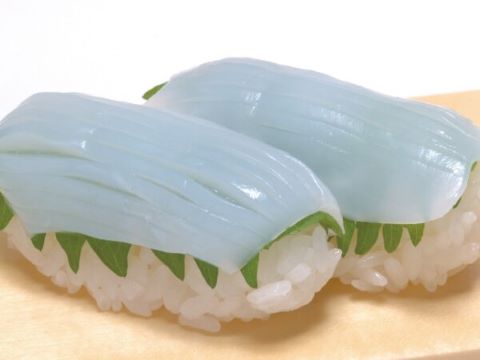
As a side note, Ooba is often placed between the shari and squid at conveyor-belt sushi restaurants. This is to mask the fishy smell of the squid with the smell of the Ooba.
[sc_apply url=”https://sushiuniversity.jp/apply/”]
We hope this information will be helpful.

Revision date: April 11, 2023
Share this article
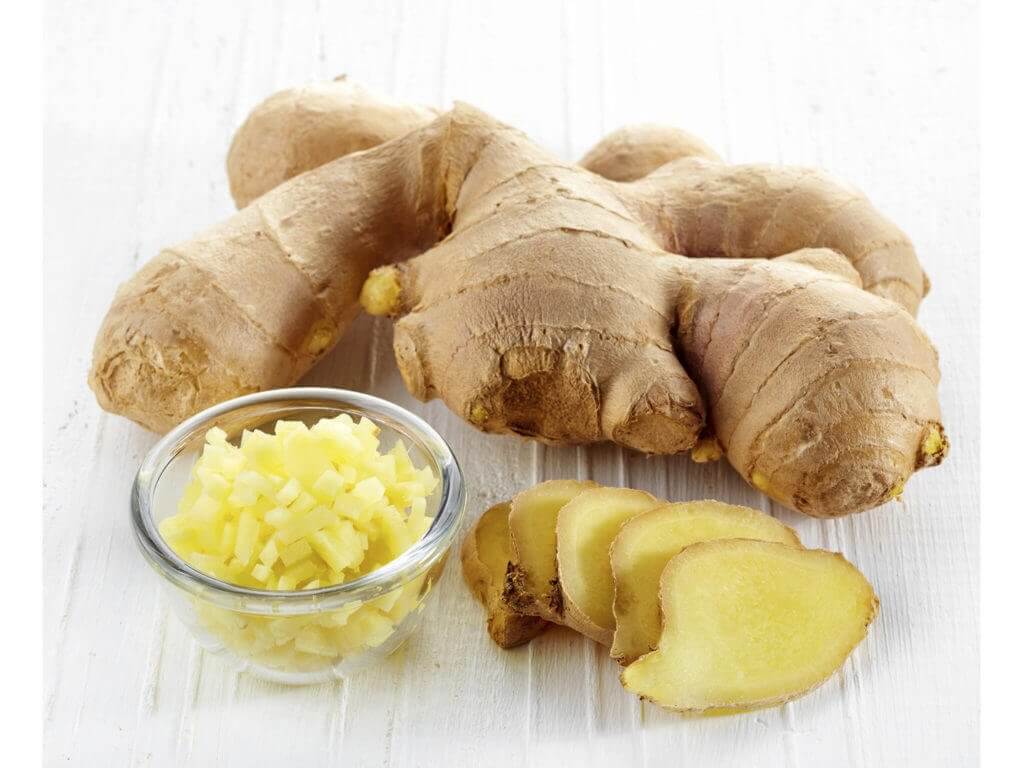 Sashimi essentials such as wasabi, ginger, karami-daikon, etc., are collectively called “Karami”. Originally Karami was a type of Tsuma. From the mid to late Edo period, Karashi (mustard) was mainly used for karami in sashimi. Eventually, due to the influence of Edomae sushi, wasabi became the norm. For sashimi such as bonito and sardines, wasabi isn’t enough to offset the peculiar aroma. In some cases, it is better to use ginger, which works on the root components of the odor. These types of fish have the best flavor once spring has passed, and interestingly enough, wasabi is least prevalent in summertime, while ginger is in peak season. Mother nature seems to know what she’s doing.
Sashimi essentials such as wasabi, ginger, karami-daikon, etc., are collectively called “Karami”. Originally Karami was a type of Tsuma. From the mid to late Edo period, Karashi (mustard) was mainly used for karami in sashimi. Eventually, due to the influence of Edomae sushi, wasabi became the norm. For sashimi such as bonito and sardines, wasabi isn’t enough to offset the peculiar aroma. In some cases, it is better to use ginger, which works on the root components of the odor. These types of fish have the best flavor once spring has passed, and interestingly enough, wasabi is least prevalent in summertime, while ginger is in peak season. Mother nature seems to know what she’s doing.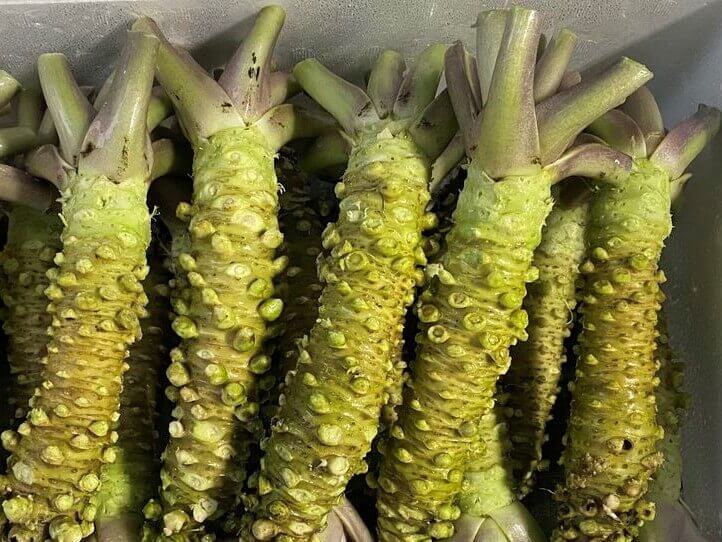 So, what is the true meaning of the shocking phrase, “Once you try tuna or flounder with this wasabi, you’ll never be able to eat it without wasabi again”?
So, what is the true meaning of the shocking phrase, “Once you try tuna or flounder with this wasabi, you’ll never be able to eat it without wasabi again”? Ken is considered to be better the longer and thinner it is, but this is a mistake. Not only is Ken tangled and difficult to eat, but it also doesn’t give any sense of the flavor of the materials. It’s long been said that 10 cm is a reasonable length and this is also the length that looks the most refined.
Ken is considered to be better the longer and thinner it is, but this is a mistake. Not only is Ken tangled and difficult to eat, but it also doesn’t give any sense of the flavor of the materials. It’s long been said that 10 cm is a reasonable length and this is also the length that looks the most refined.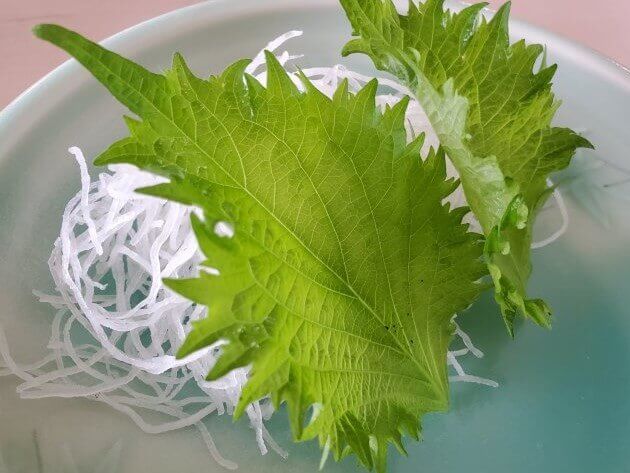 There are a few types of Tsuma. One is Shikitsuma (pronounced ‘shikizuma’ in Japanese) which consists of things like green shiso and cucumber leaves that sashimi is laid on. Another is Metsuma (pronounced ‘mezuma’ in Japanese) which is made from aome and murame. The final is Tatetsuma (pronounced ‘tatezuma’ in Japanese) used to prop sashimi up like hanahojiso and hanamaru kyuri. All Tsuma is served to bring out the charm of sashimi.
There are a few types of Tsuma. One is Shikitsuma (pronounced ‘shikizuma’ in Japanese) which consists of things like green shiso and cucumber leaves that sashimi is laid on. Another is Metsuma (pronounced ‘mezuma’ in Japanese) which is made from aome and murame. The final is Tatetsuma (pronounced ‘tatezuma’ in Japanese) used to prop sashimi up like hanahojiso and hanamaru kyuri. All Tsuma is served to bring out the charm of sashimi.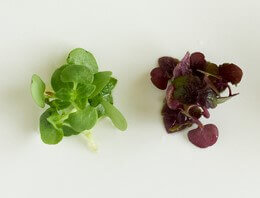
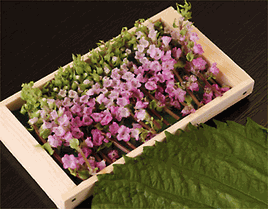
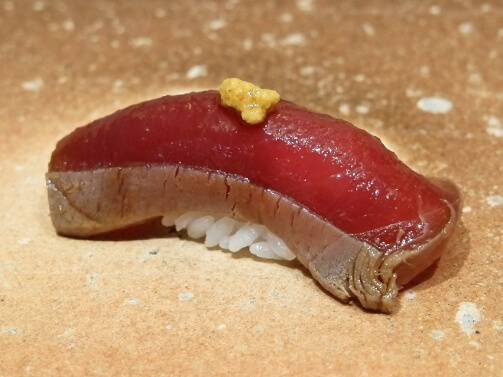 Japanese mustard refers to
Japanese mustard refers to